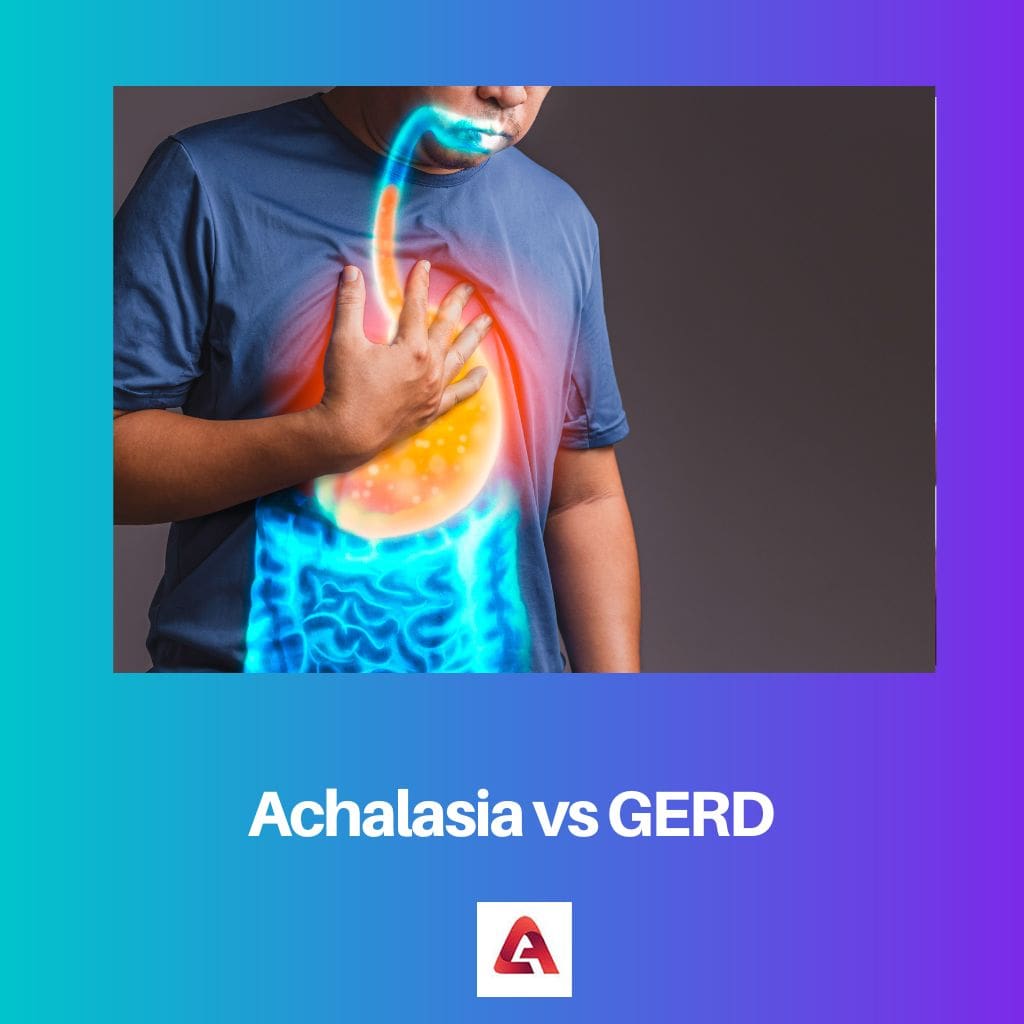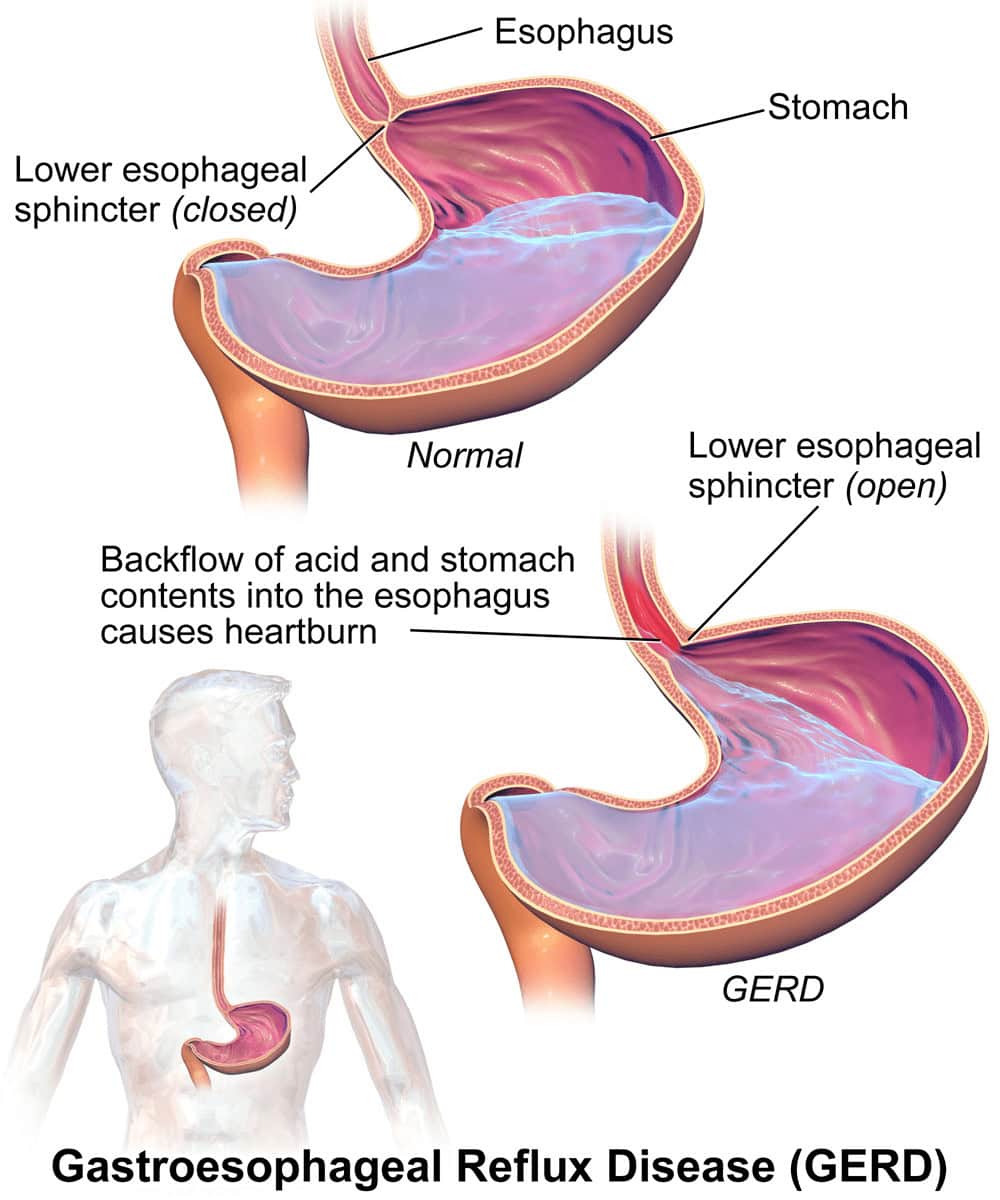Key Takeaways
- Achalasia is a rare disorder characterized by difficulty swallowing and the lower esophageal sphincter’s failure to relax properly.
- Gastroesophageal reflux disease (GERD) is a common condition caused by stomach acid or bile flowing back into the esophagus, resulting in symptoms like heartburn and regurgitation.
- Treatment options for achalasia include medications, Botox injections, and surgery, while GERD can be managed through lifestyle changes, medications, or surgical intervention.

What is Achalasia?
Achalasia is a rare esophagus (a muscular tube connecting the mouth to the stomach) disorder. It involves difficulty swallowing food and feeling food getting stuck in the throat. Malfunctioning of the nerve cells that control the esophagus muscles is the leading cause. The myenteric plexus coordinates the muscles’ contraction and relaxation, allowing food to pass through the esophagus.
Difficulty swallowing, chest pain, regurgitation of food, and weight loss are the common symptoms of this disorder. People suffering from severe achalasia may need a feeding tube to get nutrition. The incoordination of muscles can lead to chest pain when the food gets stuck in the esophagus and strains the chest.
Achalasia is diagnosed through an endoscopy, and other tests, such as a barium swallow or esophageal manometry, may be utilized to confirm the diagnosis. There is currently no cure for achalasia, but treatment such as medications, dilatation, and surgery can be employed. Nitrates or calcium channel blockers can help relax the esophagus muscles, but they are not always practical.

What is GERD?
A chronic condition occurs when stomach acid and other stomach contents backflow into the esophagus, known as Gastroesophageal Reflux Disease (GERD). Acid reflux is another name for GRED. Heartburn (a burning sensation in the chest) is the main symptom and can be accompanied by a sour taste, chest pain, and difficulty swallowing.
The cause of GERD has not been known yet, but a muscle malfunction in the separation muscle between the esophagus and stomach (called the Lower Esophageal Sphincter (LES)) is thought to be its cause. The LES is a muscle ring that opens and closes to prevent stomach contents from flowing back into the esophagus. In GERD, the LES either opens too or does not close properly.
Lifestyle changes, medications, and in some cases, surgery are plausible treatment options for GERD. Not eating at bedtime also helps reduce symptoms. Antacids and proton pump inhibitors help neutralize or reduce stomach acid. Surgery, such as a Nissen fundoplication, can strengthen the LES and prevent acid reflux. Consulting with a healthcare provider for proper diagnosis and treatment is essential.

Difference Between Achalasia and GERD
- Achalasia is caused mainly by nerve cell malfunction, whereas the lower esophageal sphincter (LES) muscle malfunction causes GERD.
- The main sign of achalasia is difficulty swallowing, whereas GERD’s main symptom is heartburn.
- An endoscopy diagnoses achalasia, whereas GERD is diagnosed through symptoms, physical examination, and testing.
- Achalasia treatments include medications, dilatation, and surgery, whereas treatment options for GERD include lifestyle changes, drugs, and in some cases, surgery.
- Achalasia is a rare disorder among people, whereas GERD is more common and affects millions of people worldwide.
Comparison Between Achalasia and GERD
| Parameters of Comparison | Achalasia | GERD |
| Definition | Malfunction of Nerve Cells | Malfunction of the Lower Esophageal Sphincter (LES) Muscle |
| Diagnosis | Endoscopy | Symptoms, Examination |
| Symptoms | Swallowing Difficulty | Heartburn |
| Treatment | Medications, Dilatation, Surgery | Lifestyle Changes, Medications, Surgery |
| Prevalence | Rare | Common |



